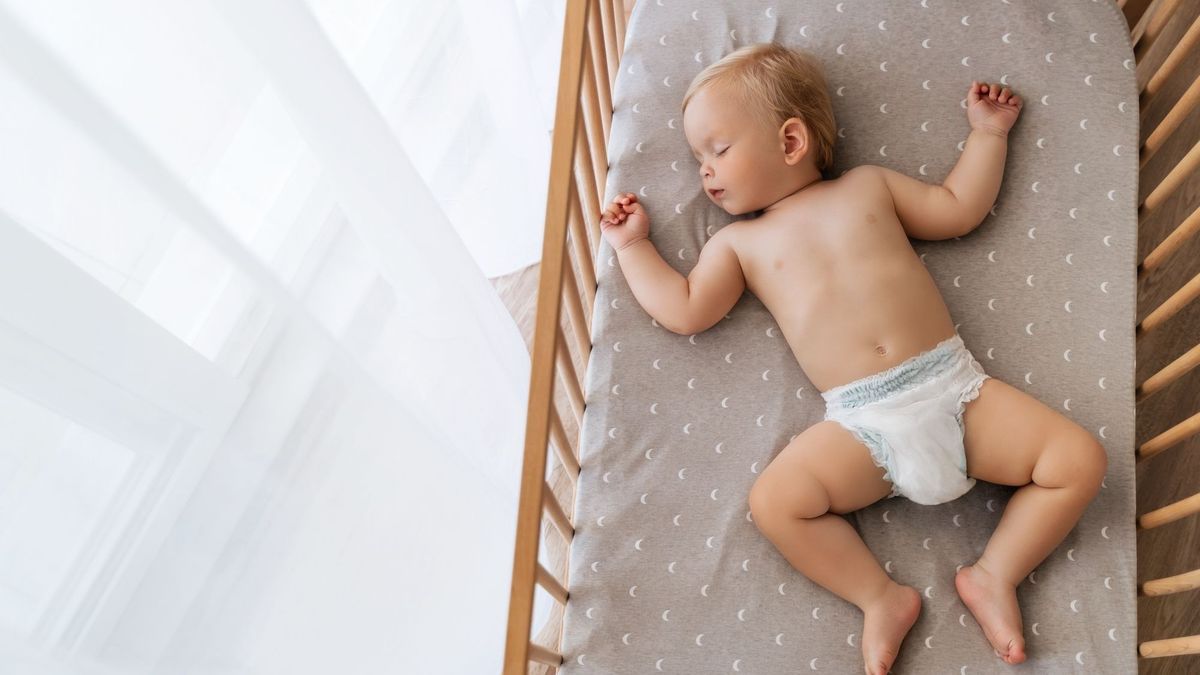
To avoid sudden infant death syndrome, sleeping babies on their backs is recommended by health authorities in many countries, including Europe. But Inserm is now pointing out a worrying problem: on many diaper packages, the visuals used show other problematic sleeping habits, confusing the message of prevention.
When marketing visuals do not follow recommendations
Laying your baby on his back, without anything that could hinder his breathing during his first months of life should be obvious. At least this is the message shared by the High Authority of Health in Europe and pediatricians since the 1990s to reduce the number of sudden infant deaths. A strong message, but confused today by marketing around babies. Thus, many dangerous accessories are still sold to supposedly soften baby’s sleep (bed bumpers, soft toys, baby wedges, etc.) when they present a risk of suffocation.
Studies evaluating images of sleeping babies in parenting magazines, newspapers, baby bed brochures, commercial photo bank websites and the social network Instagram® have also shown alarming rates. of non-compliance with recommendations for the safe sleeping of infants ranging from 35 to 93% depending on the supports.
4 out of 10 diaper packs show an inappropriate visual
It is in this context that Inserm researchers had the idea of studying the visuals used on diaper packages for infants weighing less than 5 kg (those most at risk of sudden death), in 11 countries. Europeans.
For each identified packaging, they extracted the following data:
- Was there a picture of a baby?
- Was the baby sleeping and, if so, was the baby sleeping in compliance with 3 of the 7 sudden infant death prevention recommendations that can be easily assessed on images?
The result is staggering: of the 631 packages of diapers for babies weighing less than 5 kilos, almost half (49%) represent a sleeping baby. But 79% of these packages (or 39% of all packages) were non-compliant with at least one sudden death prevention recommendation.
“Thus, we could observe a baby sleeping in a prone or lateral position in 45% of these packages, with bedding or a soft object (pillow, toy resembling a pillow, soft toy, duvet, eiderdown, sheepskin, blanket, sheet of unadjusted mattress, or bed bumper) in 51% of them, or sharing the sleeping surface with another person in 10% of them.” indicates the press release.
To go further, the researchers also conducted a search on the websites of health agencies or learned societies and again found non-compliant images.
“Our results highlight that there is a gap between the messages that are conveyed on these everyday products or institutional sites, to which many parents are heavily exposed, and the recommendations for the prevention of sudden death.” concludes Martin Chalumeau, last author of the study, epidemiologist at Inserm, professor at Paris Cité University and pediatrician at AP-HP.
A situation highlighted which should encourage manufacturers and the legislator to take measures to make these products comply with the recommendations for the prevention of sudden infant death.


What is the best way to put your baby to bed according to the recommendations?
Sudden infant death syndrome, or the unexpected death of an infant under one year old, remains a mystery in many cases today. However, the sleeping position on the stomach was identified as the major risk factor for this syndrome in the early 1990s. Placing the child on the back for the night thus reduced the rate of sudden deaths by 75 %, without eliminating the risk completely.
Other risk factors linked to the sleeping environment were then identified, including soft sleeping or surrounding surfaces, and sharing the sleeping surface with another person (parent, brother, sister, etc.).
Today, the recommendations are clear. To put your baby to bed safely:
- We lay him on his back;
- On a firm surface;
- In a secure bed (cot with bars, cradle, travel cot, playpen);
- In the parents’ room until 6 months;
- Without soft objects or bedding accessories, on, under, next to baby (pillow, pillow-like toy, stuffed animal, duvet, comforter, sheepskin, blanket, loose mattress sheet, or bumper);
- Without sharing the sleeping surface with another person.
